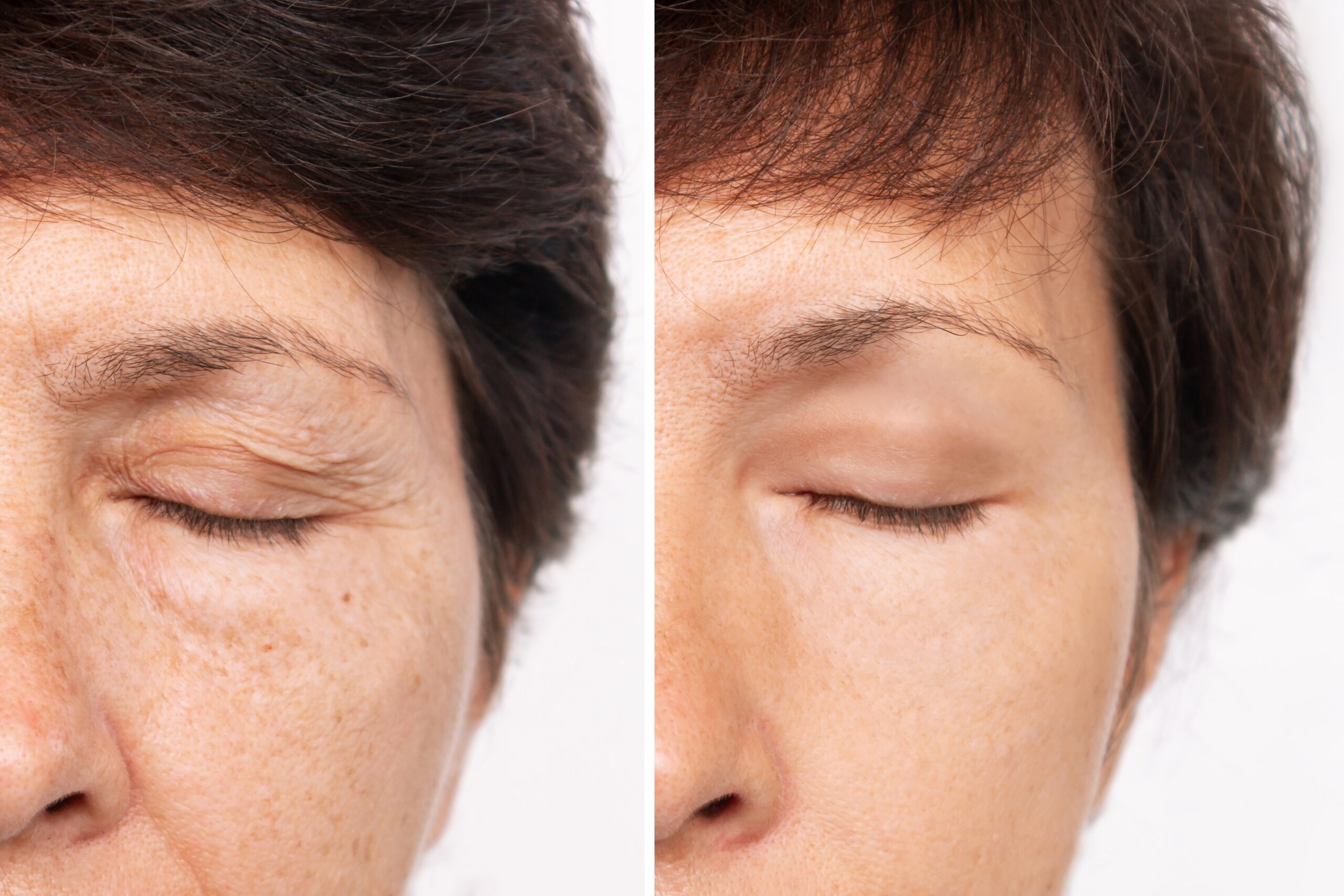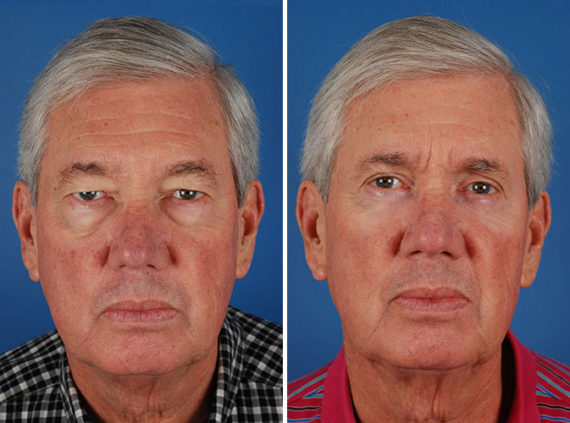Blepharoplasty, or eyelid surgery, is a highly effective procedure for rejuvenating the appearance of the eyes. However, one common concern among patients is the potential for scarring. While all surgical procedures leave some form of a scar, modern techniques and proper aftercare can significantly reduce their visibility.
If you’re considering blepharoplasty or have recently undergone the procedure, you may be wondering how long it takes for scars to heal and what you can do to minimize them. In this guide, we’ll discuss the timeline for scar healing, effective treatments, and practical ways to reduce their appearance.

How Long for Blepharoplasty Scars to Heal?
The healing process after blepharoplasty occurs in stages, with the most noticeable swelling and redness diminishing within the first 6 to 8 weeks. However, while the initial recovery may be relatively quick, scar maturation is a longer process. Over the course of six months to a year, scars gradually fade and blend with the natural skin tone. Individual healing varies based on factors such as skin type, age, and post-operative care. By following proper aftercare recommendations, patients can significantly reduce the visibility of scars and promote optimal healing.
Tips for Blepharoplasty Scar Healing
Proper post-operative care is essential for minimizing the appearance of blepharoplasty scars. While some level of scarring is inevitable, there are several proactive steps patients can take to support healing and encourage scars to fade more quickly. By following these tips, you can optimize your recovery and achieve the best possible results:
- Follow Your Surgeon’s Instructions: Adhering to all post-operative care guidelines ensures proper healing and minimizes complications.
- Keep the Incisions Clean and Moisturized: Using recommended ointments and keeping the area clean can help prevent infection and promote skin regeneration.
- Avoid Direct Sun Exposure: UV rays can darken scars, making them more noticeable. Wearing sunglasses and applying sunscreen can protect healing skin.
- Be Gentle with the Eyelids: Avoid rubbing or pulling on the skin around the eyes to prevent irritation and disruption of the healing process.
- Stay Hydrated and Eat a Healthy Diet: Proper nutrition supports skin repair and overall recovery.
- Use Silicone Gel or Scar Creams: Specialized scar treatments can help soften and reduce the visibility of scars over time.
- Consider Laser or Other Scar Treatments: If scars remain prominent, consult your surgeon about additional treatment options like laser therapy or microneedling to further improve their appearance.
How to Hide Blepharoplasty Scars with Makeup
For most patients, makeup can be used to effectively conceal blepharoplasty scars once the incisions have sufficiently healed. Typically, this means waiting around ten days after surgery before applying any cosmetic products. At this point, redness and minor imperfections can often be masked with foundation or concealer. In some cases, a well-applied layer of eyeshadow may be enough to naturally blend the area and create a seamless look.
What’s the Best Concealer After Eyelid Surgery?
To effectively conceal bruising or discoloration, follow the rule of complementary colors. Use a yellow-based concealer to neutralize purple bruising, a green-tinted concealer to mask redness, and a purple-toned concealer to cover yellow discoloration. Opt for lightweight, breathable formulas to prevent irritation on healing skin. Additionally, avoid black or brown eyeliner initially, as these can accentuate post-operative redness rather than conceal it.
Treating Scars From Upper and Lower Blepharoplasty
Laser Treatments
Laser resurfacing is a highly effective method for improving the appearance of blepharoplasty scars by targeting both surface irregularities and deeper tissue damage. Ablative lasers work by removing damaged skin layers, revealing smoother skin underneath, while non-ablative lasers stimulate collagen production to improve skin elasticity and texture. Additionally, laser treatments help reduce redness and discoloration by minimizing the visibility of blood vessels. To achieve optimal results, multiple sessions may be required, along with strict adherence to post-treatment care, such as avoiding sun exposure and using recommended skincare products.
Scar Revision Surgery
For patients with persistent or highly visible scars following blepharoplasty, scar revision surgery may provide an effective solution. This procedure involves carefully excising or repositioning the scar tissue to create a more refined appearance. It is typically recommended once the scar has fully matured, which can take between 6 to 12 months. An experienced plastic surgeon can assess the severity of the scarring and customize the procedure to achieve the best aesthetic outcome for each patient. By utilizing precise techniques and ensuring minimal trauma to surrounding tissue, scar revision surgery can significantly enhance the final result, helping patients regain confidence in their appearance.
Are You Ready For A Consultation?
You are about to take the first steps towards improving your appearance and enhancing your self-image by learning about contemporary plastic surgery.
Factors That Influence Eyelid Surgery Scars
Several factors play a role in how blepharoplasty scars develop and fade over time. While modern surgical techniques aim to minimize scarring, individual healing responses vary. Genetics, post-operative care, and the expertise of the surgeon all contribute to the final outcome. Understanding these factors can help patients set realistic expectations and take proactive steps to ensure optimal healing and minimal scarring.
1. The Recovery Process and Aftercare
Following post-surgical instructions is crucial to achieving the best results and minimizing scarring. Patients who neglect aftercare may experience complications such as prolonged swelling, irritation, or even worsened scarring. Keeping the incision sites clean, applying prescribed ointments, and avoiding excessive strain on the eyelids all contribute to a smooth recovery. Ultimately, the responsibility lies with the patient to adhere to these guidelines to ensure optimal healing and a more refined aesthetic outcome.
2. The Patient’s Age and Genetics
Skin elasticity plays a crucial role in how well blepharoplasty scars heal. Younger patients typically have more elastic skin, which allows for faster and more effective healing, often resulting in less noticeable scars. However, age is not the sole determining factor—genetics and overall skin health also significantly contribute to the healing process. While neither the patient nor the surgeon can control these elements, understanding their impact can help set realistic expectations for recovery.
3. The Skill of the Plastic Surgeon
The expertise of the plastic surgeon performing your blepharoplasty is one of the most critical factors influencing scarring and overall results. A highly skilled surgeon will make precise incisions along natural eyelid creases to ensure minimal visibility of scars. Their technique, suturing method, and attention to detail can significantly affect healing and final outcomes. Choosing an experienced and reputable plastic surgeon is essential for achieving the best possible results with minimal scarring.
Before & After Photos


* Each patient is unique and individual results may vary.
How to Choose the Best Blepharoplasty Surgeon
While proper care and treatments can minimize scars, the skill of your plastic surgeon plays a crucial role in achieving the best results. Choosing an experienced surgeon ensures precision in incision placement and minimizes the risk of noticeable scarring.
At The Aesthetic Surgery Center, Dr. Agarwal and Dr. Maloney specialize in blepharoplasty using advanced techniques to create natural-looking results with minimal scarring. Their expertise in laser-guided incisions and meticulous suturing helps ensure faster healing and better aesthetic outcomes. If you’re considering eyelid surgery, schedule a consultation today by calling 239-594-9100 or visiting our contact page to learn more about how we can help enhance your appearance with minimal visible scarring.